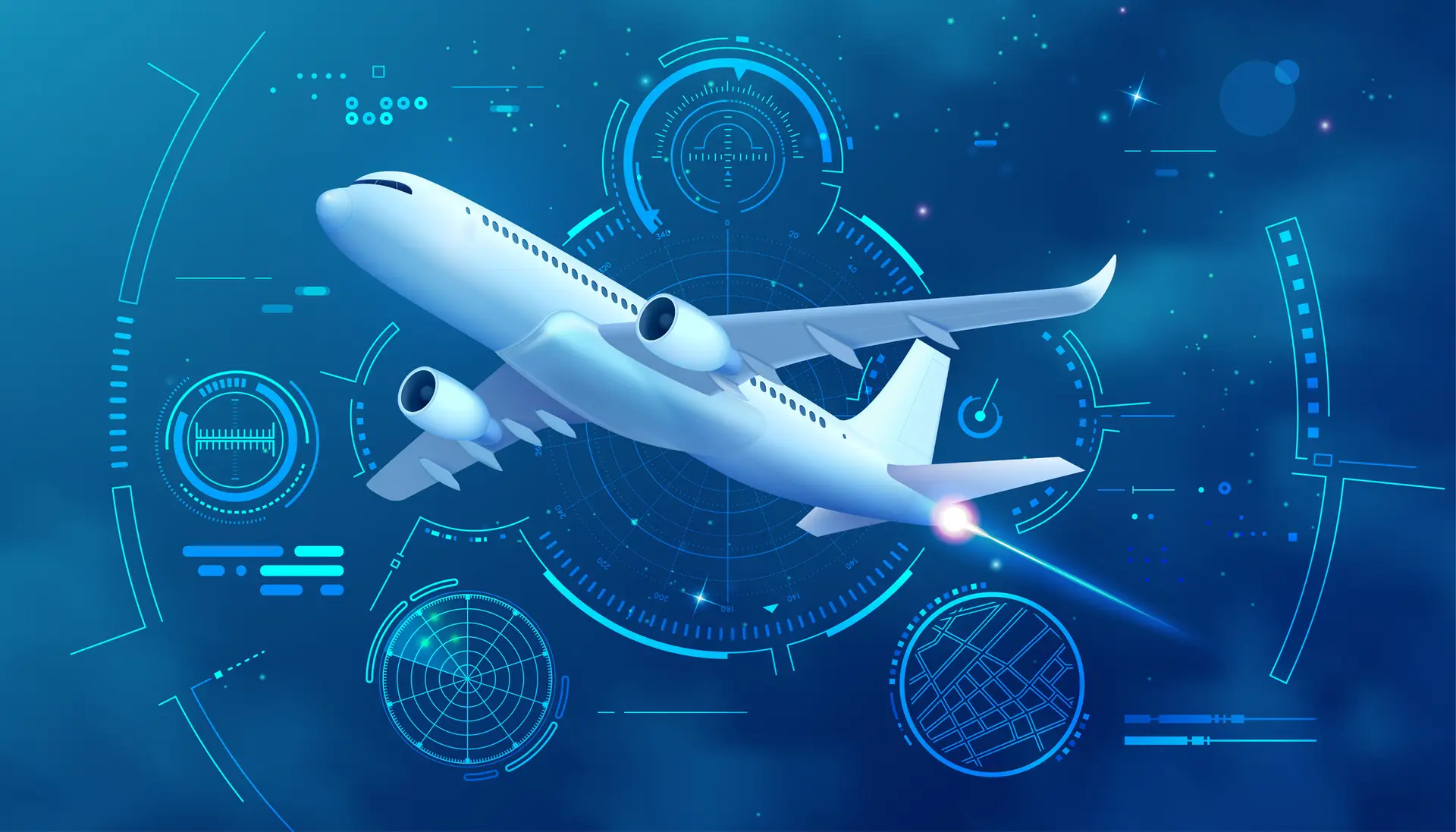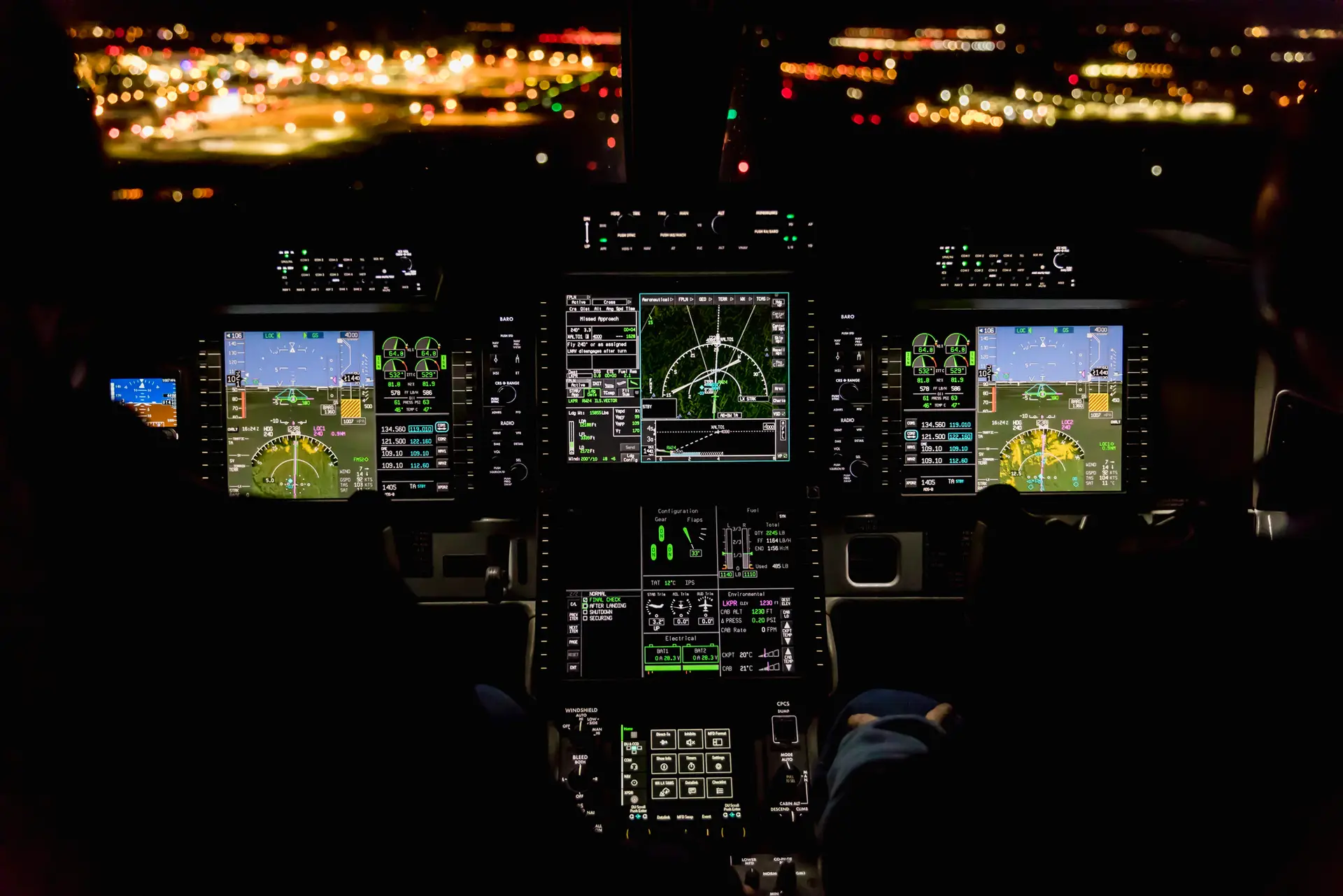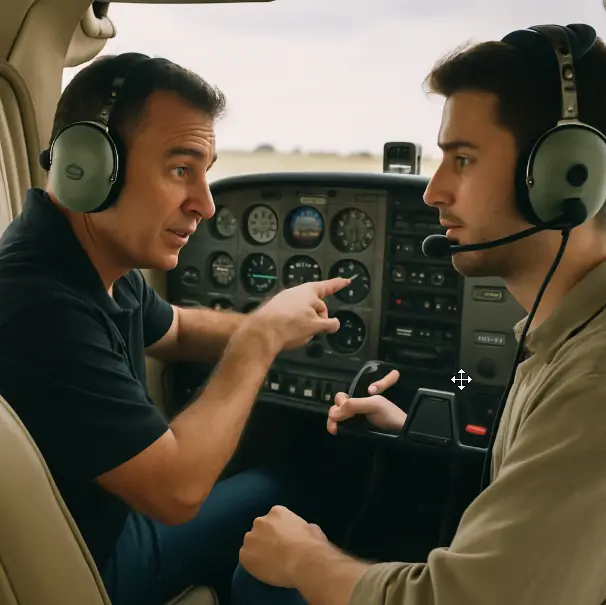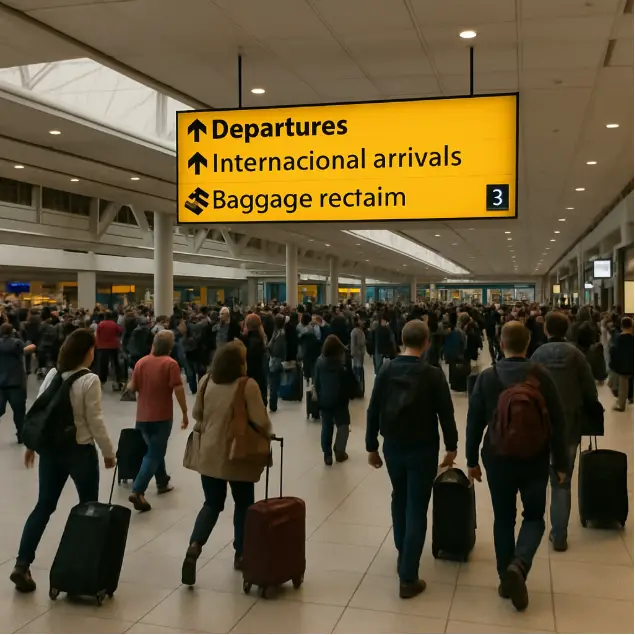AI’s Transformation of Commercial Aviation and the Role of Pilots

- aviatorpro_6714
In 2025, artificial intelligence (AI) is revolutionizing the aviation industry, transforming how airlines operate, flights are managed, and pilots perform their duties. The global AI market in aviation is projected to reach $2,222.5 million by 2025, up from $152.4 million in 2018, with a compound annual growth rate (CAGR) of 46.65% according to Markets and Markets. This growth reflects the integration of AI into fleet management, customer service, maintenance, and pilot operations. While AI enhances efficiency, safety, and sustainability, it also raises questions about the future of commercial pilots. Are pilots at risk of being replaced, or is AI a tool to augment their capabilities? This article explores AI’s impact on commercial pilots and aviation, highlighting its benefits, challenges, and the evolving role of pilots.
AI in Aviation: A Broad Impact
AI’s influence spans multiple facets of aviation, driving efficiency and innovation. In fleet and operations management, AI optimizes aircraft utilization, reduces turnaround times, and minimizes fuel consumption. Swiss International Air Lines saved $5.4 million in a single year by using AI to enhance operational efficiency, while Lufthansa improved wind pattern prediction accuracy by 40%, leading to significant fuel savings Vaughn College. Airlines like Delta, American, and JetBlue are investing in AI for delay prediction, fuel management, pricing optimization, and crew scheduling Fortune.
Customer service has also benefited, with AI-powered chatbots and virtual assistants providing real-time information and personalized recommendations, improving passenger satisfaction. Predictive maintenance, another key application, uses AI to analyze aircraft sensor data, identifying potential issues before they lead to failures, thus enhancing safety and reducing costs.
| Aspect | Details | Examples/Notes |
| Market Growth | Global AI market in aviation projected to reach $2,222.5 million by 2025, CAGR 46.65% | Driven by efficiency and competitiveness |
| Fleet and Operations | Optimizes fleets, reduces costs; Swiss saved $5.4 million, Lufthansa improved wind prediction by 40% | Applications include delay prediction, fuel management, pricing, crew scheduling |
| Customer Service | Enhances satisfaction via personalized service, real-time info, chatbots | Recommending itineraries, flight status updates, issue resolution |
| Predictive Maintenance | Analyzes sensor data to predict failures, reducing downtime and enhancing safety | Used by major airlines to prevent mechanical issues |
AI and Commercial Pilots
AI is a powerful ally for commercial pilots, enhancing their capabilities without replacing them. In 2025, AI assists pilots in flight planning by analyzing weather, air traffic, and fuel efficiency to suggest optimal routes, reducing workload and improving efficiency. In the cockpit, advanced autopilot and flight management systems (FMS) handle routine tasks like maintaining altitude and speed, allowing pilots to focus on strategic decision-making Inflight Pilot Training.
Pilot training has been transformed by AI-driven simulators that create realistic scenarios, enabling trainees to practice responses to rare but critical events. Companies like CAE are leading this shift, using AI to facilitate experiential learning Aviation International News. For example, AI can simulate engine failures or severe weather, preparing pilots for real-world challenges.
Despite these advancements, fully autonomous commercial flights are not imminent. Technological limitations prevent AI from handling complex, unpredictable situations, and regulatory bodies like the FAA and EASA require extensive updates to accommodate autonomous systems Aerocadet. Public trust is another barrier, with a 2023 IATA survey indicating that 75% of passengers are uncomfortable with fully autonomous flights. A 2023 NASA study noted that 70% of aviation accidents stem from human error, yet human pilots remain crucial for their adaptability in mitigating risks AI cannot anticipate NASA.
Recent developments highlight AI’s practical applications. At AEA 2025, Universal Avionics introduced an AI-powered taxi assist solution to improve safety during ground operations, addressing a persistent challenge in aviation X Post by @FlyinAdamBadger. Discussions about AI-based copilots are ongoing, but pilot unions express concerns about safety and job security, reflecting the contentious nature of this transition X Post by @CACMmag.
Impact on Pilot Roles and Skills
AI is reshaping the skill set required of pilots. While traditional flying skills remain essential, pilots must now be proficient in managing AI systems, interpreting data, and overseeing automated processes. This shift is creating new career opportunities, such as roles in AI system management and data analysis. Educational institutions like Vaughn College are adapting, offering programs that combine aviation training with computer engineering and data science Vaughn College.
The industry faces a pilot shortage, with an estimated 500,000–600,000 new pilots needed over the next 20 years Air Cargo Week. AI-driven training programs, like the Pilot Runway initiative, are emerging to address this demand, offering streamlined paths to certification. These changes ensure that pilots remain relevant, transitioning into roles that blend technical expertise with traditional aviation skills.
Safety and Efficiency Improvements
AI significantly enhances aviation safety by reducing human error. Predictive maintenance systems detect anomalies in aircraft performance, preventing potential failures. AI also optimizes flight routes, reducing fuel consumption and environmental impact. For example, American Airlines used AI to achieve a 54% reduction in contrail formation, a contributor to climate change Forbes. AI-powered drones and real-time flight tracking further improve operational efficiency, contributing to smarter transportation systems X Post by @BullionJ32627.
| Safety/Efficiency Area | AI Contribution | Impact |
| Predictive Maintenance | Detects anomalies in aircraft systems | Reduces downtime, enhances safety |
| Flight Route Optimization | Analyzes variables to suggest fuel-efficient routes | Lowers fuel costs, reduces emissions |
| Contrail Reduction | AI predictions minimize contrail formation | 54% reduction in contrails, per American Airlines tests |
| Real-Time Tracking | Enables precise flight monitoring | Improves operational efficiency, safety |
Challenges and Future Trends
The integration of AI into aviation faces significant challenges. Regulatory bodies must overhaul standards to accommodate AI-driven systems, a process that could take decades. Legal liability for AI-related accidents remains unresolved, complicating adoption. Public trust is a major hurdle, with many passengers preferring human pilots. Pilot unions, such as ALPA and IFALPA, oppose moves toward full automation, citing safety concerns Aerocadet.
Looking ahead, the industry is exploring AI-based copilots, but full autonomy is unlikely before 2055, with remote operators potentially overseeing multiple AI-piloted aircraft X Post by @RealMikeJomes. Partnerships, like Archer Aviation’s collaboration with Palantir, aim to build AI foundations for next-generation aviation systems X Post by @ArcherAviation. The future likely involves a collaborative model where AI and human pilots work together, leveraging AI’s analytical power and human judgment.
Conclusion
AI is transforming commercial aviation in 2025, enhancing efficiency, safety, and sustainability while redefining the role of pilots. Rather than replacing pilots, AI serves as a powerful tool, assisting with flight planning, training, and maintenance. Pilots are adapting to new roles, requiring skills in AI system management and data analysis. Despite challenges like regulatory hurdles and public skepticism, the collaboration between AI and human pilots promises a safer, more efficient future for aviation. As the industry evolves, this partnership will ensure that the skies remain a place of innovation and reliability.



